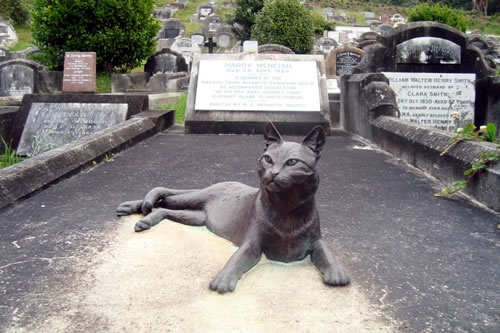
Harry McNeish's grave in Karori Cemetery, Wellington.
Harry McNeish, carpenter on Endurance expedition
Scottish-born Harry McNeish has been honoured in New Zealand for his efforts during Sir Ernest Shackleton's Imperial Trans-Antarctic Expedition. As carpenter for the expedition, McNeish played a significant role in the survival of Shackleton's men. But despite this Shackleton denied him the Polar Medal, purportedly for disloyalty. Some years later McNeish immigrated to New Zealand, where he died destitute in 1930. The New Zealand government ensured that he was buried with full naval honours, and since his death his grave has been marked by the New Zealand Antarctic Society (NZAS).
Time on the Endurance
Harry ‘Chippy' McNeish (also spelt as McNish), was born in Scotland in 1874. He was working in the Merchant Navy when he was reportedly attracted to Shackleton's expedition by an advertisement. Initially his time on board the Endurance was spent making pieces of furniture and devising improvements to the party's working environment. But when the vessel became trapped in pack ice in February 1915 his focus turned to constructing makeshift accommodation. Then, as the Endurance began to take on water during the spring melt, he constructed a cofferdam to prevent it from flooding.
There was ultimately nothing McNeish could do to stop the pressure of ice floes against the vessel and in October 1915 it was crushed. Sadly, as a result of their new predicament Shackleton decided it was necessary for ‘weaklings', including puppies and the cat McNeish had brought on the voyage, 'Mrs Chippy', to be shot. Thomas Crean carried out the shooting, but McNeish apparently never forgave Shackleton for giving the order.
Two months later, in December 1915, the pair came into direct conflict. McNeish was concerned that Shackleton's plan to march across the ice floes to reach land involved hauling, and possibly damaging, their lifeboats. So when after four days they had made little progress, McNeish told the captain of the Endurance, New Zealander Frank Worsley, that he refused to continue. He argued that since the vessel had been lost he was under no legal obligation to obey orders. Following a face-to-face argument with Shackleton, in which the latter threatened to shoot the carpenter, McNeish gave up on his ‘one-man mutiny'.
In April 1916 McNeish was selected by Shackleton to form part of the rescue party that would travel from Elephant Island to South Georgia. Shackleton may have wanted him on board so that he could not cause trouble amongst the remaining men. But McNeish's work preparing the James Caird for the voyage, and having him on board to make any necessary repairs, may also have been factors. Whatever the reason, his excellent performance during the journey saw the log entry of the earlier incident cancelled. But Shackleton hadn't forgotten. Most accounts suggest that it was this incident, coupled with McNeish's forthrightness - which Shackleton took as disloyalty - that were behind his decision to deny McNeish the Polar Medal.
Time in New Zealand
McNeish returned to the Merchant Navy after the expedition. Following several trips to New Zealand with the New Zealand Shipping Company, the company offered him a job on the Wellington wharves. He immigrated in 1925 but was forced to retire after he was injured. Destitute, he survived by sleeping in the wharf sheds and through monthly collections from the waterside workers. He was eventually found a place in the Ohiro Benevolent Home, but his health deteriorated and he died in Wellington Hospital on 24 September 1930. The government learnt of his death and arranged for him to be buried, with full naval honours, in Karori Cemetery two days later. His grave went unmarked until the New Zealand Antarctic Society (NZAS) erected a headstone in 1959. They added a bronze statue of his beloved cat, Mrs Chippy, in 2004.
Further information
- Harry McNish (Wikipedia)
- Mrs Chippy (Wikipedia)
- Mrs Chippy (New Zealand Antarctic Society)


Community contributions